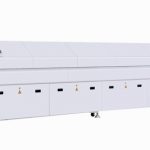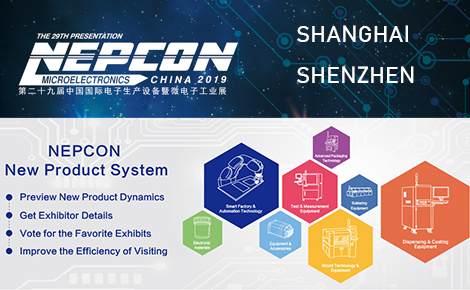- Welcome to OUBEL !
- +86 755 2954 6287
- sales@obsmt.com
Reflow soldering temperature curve

High Speed industrial mixer
May 6, 2015Reflow soldering temperature curve
The electronics industry has been able to thrive, surface mount technology (SMT,Surface Mount Technology) the invention and occupy a great contribution. While thereflow (Reflow) is one of the most important technologies in surface mount technology.Here we try to explain the reflow soldering techniques and the problem of setting.
The temperature curve of reflow soldering consists of preheating, infiltration, reflow and cooling of four parts, the following is the personal experience, if wrong please feel free advanced.
Preheating zone
The preheat zone usually refers to the temperature from room temperature to about 150 ℃ around the region, in this region, slowly rising temperature and moisture insome solvent and paste process can be volatile, electronic parts, especially the ICparts to adapt slowly warming, behind the high temperature. But the PCB surfaceparts of different sizes, endothermic naked is not one, in order to avoid the temperature uneven phenomenon, heated in the preheating zone speed is usuallycontrolled at 1.5 ~ 3 ℃ /sec. Another purpose of the preheat zone uniformly heated,is to make the volatile solvent moderate and activated flux, because most flux activation temperature fall at 150 ℃.
Rapid heating is rapid to flux softening temperature, therefore the flux can quicklyspread to cover the largest area of solder joints, it may make some activator into the practical alloy liquid. However, if too fast rise, due to heat stress, may cause slightcrack ceramic capacitor (micro crack PCB), the heat generating uneven deformation(Warpage), empty or IC chip damage, while the solvent paste in the volatile too fast,will also lead to the collapse of danger.

The temperature climbs slowly allows the solvent evaporation or gas more escape, it also makes the flux can be closer to the solder joint, reduce the diffusion and might collapse. But warming is too slow will lead to excessive oxidation and reduce the fluxactivity.
The preheat zone furnace for heating the general channel length of 1/4 – 1/3, theresidence time is calculated as follows: let the environment temperature is 25 ℃, ifwarming slope in accordance with 3 ℃ /sec computing (150-25) /3 is 42sec, such aswarming slope under 1.5 ℃ /sec computing (150-25) /1.5 is 85sec. According to thecomponent size difference degree usually time to adjust to control temperature slope is best at 2 ℃ below /sec.
There are also some bad phenomenon has relations with the preheating zonetemperature, below one one:
1 collapse:
This is mainly occurred in the paste phase solder melts before, solder paste viscositydecreased with the increase of temperature, this is because the temperature that themolecules within the material because of the heat and vibration caused by moresevere; in addition a rapid rise in temperature will make the solvent (Solvent) have no time to properly volatile, causing more rapid viscosity decline. Right, the temperature rise will make the solvent volatilization, and increase the viscosity, but solventvolatilization and is proportional to the temperature and time, that is to say to a certain temperature rise, a long time, solvent amount more. Therefore, heating the solder paste viscosity paste viscosity slow than fast heating up to high, solder paste is lessprone to collapse.
The 2 solder ball:
The gas rapidly volatilized even paste together outside, form a separate paste blockin the small gap parts, separation of the reflow soldering paste block melts andemerge from the parts and the formation of solder balls under the.
3 ball:
Rising too fast, solvent gas will quickly from tin high volatile out and put the spattersolder paste. Slow heating speed can produce effective control of solder ball. Butwarming is too slow will lead to excessive oxidation and reduce the flux activity.
4 lamp wick siphon phenomenon:
This phenomenon is in solder wetting solder solder pins, from the region along the pinto climb up, so that the solder joints have insufficient solder or air welding problems.The possible reason is the solder in melting stage, parts of foot temperature is higher than the pad temperature induced by PCB. PCB can increase the temperature at the bottom or near the melting point of the solder paste extension in time to improve the best balance, temperature can reach parts of foot and the pad in the solder wettingfront. But the solder has wetting at the pad, the solder shape is difficult to change, this time is not influenced by the temperature rise rate.
The 5 poor wetting:
The wettability is poor due to tin welding process is caused by excessive oxidation, via reduced heating paste to absorb too much heat to improve. The ideal of reflow timeshould be as short as possible. If there are other factors induced heating time notshortened, the suggestions from room temperature to the melting point of solder paste. Linear temperature, so that the reflow soldering can reduce the possibility of tinoxide.
6 weld or “pillow” effect (Head-In-Pillow):
The main reason of weld may be because lamp wick siphon phenomenon or notwetting caused by. Solution of siphon phenomenon can refer to a lamp wick lamp wicksiphon phenomenon. If it is not wet, is also the pillow effect, this kind of phenomenon is part feet have solder immersion, but did not form a real common gold or wetting,this problem can usually be used to improve the reduction oxidation, can solve thepoor wetting method reference.
7 tombstone effect and skew:
This is due to the wetting parts does not mean the lamp wick, similar to siphon phenomenon, can prolong the melting point of solder paste by near in time to improve, or reduce the heating rate, the parts of both ends of the temperature equilibrium within the melting front. Another thing to note is the pad design in PCB, if there are obvious different sizes, asymmetry, or is a pad with a grounding (ground)without thermal resistance (therma thief) and the design of the other party withoutgrounding pads, easy to cause the different temperature appears in the pad


